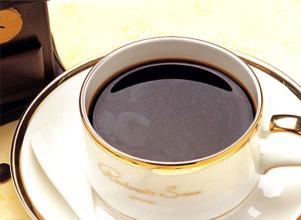Flavor description of Tarazhu Coffee beans in Costa Rica introduction of Grinding scale varieties in Manor production area
Flavor description of Tarazhu Coffee beans in Costa Rica introduction of Grinding scale varieties in Manor production area
Costa Rica mostly uses washing treatment, and in recent years there has also been an alternative half-sun treatment (Miel) or Honey Coffee, which can be translated as "as sweet as honey" treatment. The coffee that Costa Rica claims to be "as sweet as honey" is Honey Coffee on the sack, which is quite eye-catching. It has improved the Brazilian half-sun method to increase sweetness, focusing on keeping the pectin layer glued to the pods as completely as possible, removing the peel and moving the sticky pods to an outdoor viaduct, similar to Kenyad's practice, so as not to absorb the odor and moisture of the land, then expose to the sun and air-dry for about a week or two. During this period, you have to turn the pods every hour to make them evenly dry, so that the beans can fully absorb the fruit aroma and sugar essence of the thick pectin layer, and put them into a wooden container to ripen after dehydration. It takes a lot of work, but the fruit of "honey wine" tastes as sweet as honey. The disadvantage is that the risk of this method is very high, and it is easy to mildew and rot when the weather is too wet. Costa Rica is not as dry as it is, but it dares to use the treatment of exposure for a long time, which makes people feel cold sweat, but it also reflects Costa Rican coffee craftsmanship.
The flavor of Costa Rica has always been steady, without the sharpness of Guatemala, it is quite mild and supple, sour, sweet and bitter chocolate, inclusive and well-balanced, is the classic flavor of gourmet coffee. The seven major coffee producing areas are as follows: Durieba Valley (northeast of the capital San Jose), Central Valley (northwest of San Jose), Western Valley (west of the capital), Sanhe District (east side of the capital), Blanca (southeast of the capital), Orosi (north of the capital), Tarazu (south of the capital). Among them, the Central Valley, Tarazhu and Sanhe producing areas are the most famous. In principle, the quality of coffee sloping towards the Pacific is better than that facing the Atlantic. In the 2007 Costa Rica Cup Test Competition, the champion farm Serobado was located in the Tarazu producing area south of San Jose, but the Central Valley also performed well, with two or four from the city of Naranhe, where Sanhe District seemed to be left out.
The strict management of Laminita Farm in Tarazhu production area has established a world-class reputation and is popular in European and American markets for most of the century. It can be called a world-famous coffee farm. Lamini Tower means "small gold mine". Before the Spanish colonization, the Indians used to dig gold in the present farm location, which can be described as a blessed land. Raminita produces about 1 million pounds of coffee beans a year, and after selection to remove defects (more than 70% eliminated), only 290000 pounds of high-end products are sold to the boutique market, which is not a false name. The coffee of Gai Manor is famous for its sour aromas of apple and citrus, rich milk and truffle, and delicate taste of silk, about 1200-1700 meters above sea level. In addition, Sanhe District is also a famous producing area. The Yilazhu volcano and rivers not far to the east of the capital form an excellent microclimate zone, but in recent years, the urban area has gradually extended to the suburbs, and agricultural land has been sold to developers, resulting in a sharp decline in coffee production in Sanhe area. the output is almost half of which is contracted by Starbucks, and it is not easy for the industry to buy. Aquez Grass, a famous farm in this area, has been adhering to it since 1857. It has a long history, bright acidity, soft and unsharp fruit, nuts, flower-scented taffy and sweet fragrance, which is the characteristic of coffee in this area.
Costa Rica's coffee skills are very high, regardless of breeding, planting or post-processing (washing, half-sun) is enough for all producing countries to learn from. However, the supply of famous producing areas falls short of demand, and unscrupulous operators often mix them with high-quality beans in other second-rate producing areas, and the producing areas hundreds of miles away from Tarazhu also dare to fish in troubled waters in the name of Tarazhu, so they have to be careful.
Costa Rican coffee generally uses moderate roasting techniques to reflect the neutral acidity and aroma of coffee beans, and the coffee produced after roasting reflects the state of large grains.

Important Notice :
前街咖啡 FrontStreet Coffee has moved to new addredd:
FrontStreet Coffee Address: 315,Donghua East Road,GuangZhou
Tel:020 38364473
- Prev

Introduction to the brewing method of planting environment in the production process of Yunnan small-grain coffee beans
Yunnan small coffee beans production process brewing environment taste introduction 1) the right amount of pure water; you can use the kind of pure water used in household drinking fountains or filtered tap water. 2) Coffee beans / coffee powder; the amount of water in a cup of coffee in a siphon pot is 110ml (but after cooking it will be reduced by about 1/5), and the corresponding coffee powder is about 15g; if the conditions are right, it is best
- Next

Introduction to the production area of Manor Manor by Grinding scale treatment of Manning Coffee Bean in Indonesia
Indonesia Mantenin coffee bean grinding scale treatment taste Manor region Manor has always shown its most unique sweetness with the most unique bitterness, like the sweetness of life. No matter how much sugar you put in, you can't hide the bitterness. When you first tasted her, it was amazing. But the charming aroma makes us unable to control our crazy infatuation with her. Her suffering is like the edge of flowers.
Related
- Detailed explanation of Jadeite planting Land in Panamanian Jadeite Manor introduction to the grading system of Jadeite competitive bidding, Red bid, Green bid and Rose Summer
- Story of Coffee planting in Brenka region of Costa Rica Stonehenge Manor anaerobic heavy honey treatment of flavor mouth
- What's on the barrel of Blue Mountain Coffee beans?
- Can American coffee also pull flowers? How to use hot American style to pull out a good-looking pattern?
- Can you make a cold extract with coffee beans? What is the right proportion for cold-extracted coffee formula?
- Indonesian PWN Gold Mandrine Coffee Origin Features Flavor How to Chong? Mandolin coffee is American.
- A brief introduction to the flavor characteristics of Brazilian yellow bourbon coffee beans
- What is the effect of different water quality on the flavor of cold-extracted coffee? What kind of water is best for brewing coffee?
- Why do you think of Rose Summer whenever you mention Panamanian coffee?
- Introduction to the characteristics of authentic blue mountain coffee bean producing areas? What is the CIB Coffee Authority in Jamaica?

